May 8, 2009: Barry Cauchon
J. Bruce Ismay was the chairman and managing director of the White Star Line on the night of April 15, 1912 when the Titanic sank in the North Atlantic ocean. Ismay was also a passenger on board.

Joseph Bruce Ismay, the White Star Line Chairman and Managing Director
Yesterday I received a query from Ladybugge about J. Bruce Ismay’s rumored interference in the ship’s operation during its final and fatal voyage. Here is Ladybugge’s question.
“I think that in the era [of the Titanic] there was a lot of arrogance! Could you tell me why Ismay demanded more speed? Besides what the movie said, [did he order] more speed so he could give the newspapers something to write about”?
Excellent question Ladybugge!

The scene from the movie TITANIC referred to by Ladybugge features an exchange between Bruce Ismay and Captain Smith which takes place a short time after the Titanic had sailed.
Ismay: So you’ve not yet lit the last four boilers?
Smith: No, I don’t see the need. We are making excellent time.
Ismay: The press knows the size of Titanic. Now I want them to marvel at her speed. We must give them something new to print! This maiden voyage of Titanic must make headlines!
Smith:Mr. Ismay, I would prefer not to push the engines until they’ve been properly run in.
Ismay: Of course, I’m just a passenger. I leave it to your good officers to decide what’s best. But what a glorious end to your final crossing if we were to get to New York on Tuesday night and surprise them all! Make the morning papers. Retire with a bang, eh E.J.?
Ismay: Good man.
[Transcription courtesy of The Internet Movie Database].
As wonderful as the movie Titanic was, and I personally loved it, James Cameron still had a ‘fictional’ story to tell. Cameron used as many factual elements in the film as was possible and weaved his romantic fictional story within that framework. For the most part, much of the factual structure of the story was based on eyewitness accounts, historical documents and some unsubstantiated rumors and half truths. There was no Rose DeWitt Bukater or Jack Dawson on the passenger list and this particular exchange between Ismay and the Captain was based much more on conjecture rather than actual evidence. But the scene is still in the film because it certainly could have happened, and very well may have. If it did happen, why would this issue have been of such importance? Ladybugge mentions that arrogance and newspaper headlines could have been valid reasons for this occurring. Both are excellent points. However, let me give you a short historical explanation from both sides of the debate and you can make your own judgement on whether you think Ismay did, or did not, try to persuade Captain Smith to light the additional boilers and break the speed record for crossing the North Atlantic.
The Blue Riband (or Ribband)
For over a century and a half, ships had battled for the coveted and high-profile Blue Riband (or Ribband), the prize awarded to the fastest ship on the North Atlantic. And although no physical prize or trophy actually existed called the Blue Riband, the recognition of being the fastest ship on the North Atlantic brought real rewards to the ship’s owners. These being in the form of lucrative contracts for mail, passenger and specialty services. At the time of Titantic’s maiden voyage, the Blue Riband was held by the Mauretania, a ship owned by the Cunard line, which won it in September, 1909. The Mauretania would dominate and hold the Blue Riband for an incredible twenty years after that. The Cunard Line was a direct British competitor with the White Star Line and the fight for passengers and mail service was intense.
So in April, 1912, White Star introduced their latest ship, the RMS Titanic which set off on its first North Atlantic crossing. Logically, it makes sense why the White Star Line would want to go after the speed record. It had the newest and most powerful ship ever built. And with the rewards for holding the Blue Riband being so great, they would have financially benefited greatly from winning it.
Recently, a book called “The White Star Line: An Illustrated History 1869 – 1934” by Paul Louden-Brown was re-released and comments on the Ismay debate above and gives a fascinating historical summary of the events from the time. I own the original version which came out in 1990 but this new one is totally revamped. It should be a great read for Titanic enthusiasts. The Titanic Historical Society website has published an excerpt from Mr. Lauden-Brown’s book (which I have included below). I urge you to take a look at their website as it’s a great place for learning so much more about the RMS Titanic.

————————————————————————–
ISMAY AND THE TITANIC by Paul Louden-Brown. Excerpted from The White Star Line: An Illustrated History 1869-1934″
J. Bruce Ismay at the time of the disaster, as chairman and managing director of the White Star Line, was held to blame for the loss of the Titanic by the American press; especially those controlled by William Randolph Hearst, a newspaper magnate and one of the richest and most powerful men in America. Ismay had met Hearst years before, when he was White Star’s agent in New York. The two men disliked each other intensely and Ismay’s refusal to cooperate with the press infuriated the newspaperman storing up problems for the future. Almost twenty years after their first meeting it was the Hearst syndicated press who prosecuted a vicious campaign against him, a full-page cartoon depicting Ismay in a lifeboat watching the sinking Titanic and captioned, “This is J. Brute Ismay” and “We respectfully suggest that the emblem of the White Star be changed to that of a yellow liver.” The Denver Post, another member of his syndicated press, published the following prose on 19 April 1912:
“In the middle of the North Atlantic a giant iceberg lifts its white cliffs 500 feet in air. It towers like a mighty marble monument above the graves of 1,500 heroes who died that the women and children might be saved.
“Soon this monument will dissolve and disappear, as sooner or later in the lapse of years all monuments disintegrate and disappear. But the memory of the noble deed of these brave and self-sacrificing men should live forever.
“Swept without need, without heed, without reckoning or reason into disaster which meant inevitable death, these heroes thought not of their own safety, not of their own lives, but only of the lives and safety of the weak women and little children confided to their care. Husbands embraced their wives, fathers kissed their children good-by, and men who were leaving wives and children desolate far away at home labored to save the children of companions of misfortune.
“Then when the dear ones, the dependent ones, had been sent to safety in the lifeboats and had drifted away into the dark night, these true men, calm and courageous, stood alone upon the deck of the doomed ship and went down to death and to glory. Who would not choose so glorious a death?
“Who would not rather die a hero than live a coward?
“These men have died as men should die. They performed their duty to their fellow men, their obligation to their God.
“So may God reward them and men remember them. And may the memory of them remain forever a noble record of past heroism for humanity, a splendid inspiration to future deeds of duty and devotion.” …WILLIAM RANDOLPH HEARST.
Hearst’s idea of what constituted a “man” or what a “glorious” death might be was a rather two-dimensional view of life and death but nevertheless one his readers, hungry for information about the disaster and eager to find someone to blame, were only to happy to accept. Countless wire stories asserted Ismay’s guilt at manipulating the Titanic’s master into driving his ship faster than he wanted; of cowardice in taking the place of a passenger in one of the lifeboats; and of resigning from the company after the disaster rather than face the public. None of these allegations were true, but despite the facts, the image created by Hearst survives to this day.
The most serious assertion concerned Ismay’s alleged interference with the navigation of the Titanic. Various books and a recent film about the disaster have enlarged upon the Hearst stories. What we now see is the stereotype of a businessman, only interested in power and money; a man determined to get his own way. If this was the case one would expect him to have taken every maiden voyage he possibly could, but during his entire business life, and as chairman and managing director of White Star, he took only three; Adriatic in May 1907, Olympic in June 1911 and Titanic in April 1912. Hardly a record for someone in his position, but reflecting the fact that Ismay had more important matters to deal with then worrying about maiden arrivals and what the papers might say.
J. Bruce Ismay did not order or put pressure on the commander or chief engineer to make a record passage to New York for the Titanic’s maiden voyage. On the North Atlantic there were defined lanes or tracks which all passenger and cargo liners followed. The northern track, taken during the months of August to December, was approximately 200 miles shorter than the southern, used between January to July. The Titanic was sailing on the southern track, as her sister had done in June 1911. The Titanic, in common with her sister, adopted White Star’s policy of vessels of huge size and moderate speed, affording great comfort to their passengers. All thoughts of Atlantic speed records had been given up decades before, and far from the imagination of a few deluded passengers, speed records in ships not designed for high speed, was a costly venture both in fuel and potential engine damage. Several of the Titanic’s boilers had not been lit and because of the problem of fuel supply connected with the coal strike in Britain, economy was the watchword for this particular voyage. It was, and always had been, impractical for anyone to order the master of a transatlantic liner to arrive at a port ahead of schedule. The time for docking the vessel, supplying coal, water, fresh food and not least the arrangements made for hotel bookings and railway connections by her passengers, would all be upset. Some years ago an interesting collection of letters was discovered written between J. Bruce Ismay and various directors of the IMMC [International Mercantile Marine Company], which reveal that the directors of IMMC in New York wanted the Olympic to arrive ahead of her scheduled date, rather than Ismay, who rejected these moves; proving that White Star’s chairman wished to pursue company policy by keeping the transatlantic service running to its established timetable.
Extract from a letter from J. Bruce Ismay to P. A. S. Franklin dated 27 July 1911: Your strong recommendation that the Olympic, on her next voyage, should be allowed to dock on Tuesday evening, will receive consideration, and I note you say that she could have done this easily on her last voyage. I do not quite gather whether your recommendation goes so far as to advocate our always attempting to land passengers on Tuesday; perhaps you will let me hear from you on this.
I at once admit that docking on Tuesday evening would help you in turning the ship round, and give those on board a better chance of getting the ship in good shape for the Saturday sailing, and further, that if we could make it a practice to do this, it would please the passengers, but as I have repeatedly stated, I feel very strongly that passengers would be far more satisfied to know, when they left here, that they would not land until Wednesday morning, rather than be in a state of uncertainty in regard to this for the whole of the trip. I do not think you can have ever experienced the miseries of a night landing in New York; had you done so, I think your views might be altered.
Extract from a letter from J. Bruce Ismay to P. A. S. Franklin dated 31 July 1911: I am in receipt of your letter of the 20th. instant, confirming the cables which have passed between us in regard to the Olympic’s speed…
I am afraid, if you keep on writing me much more in regard to the Olympic docking in New York on Tuesday evening, I shall have to reply to you in the same manner as you did to Mr. Curry when he kept finding fault with the stamp of firemen you are supplying to the American Line steamers at New York.
As you are aware, I am not favourably disposed to trying to land passengers on Tuesday afternoon, but if, after talking the matter over with Lord Pirrie, Captain Smith and Mr. Bell the consensus of opinion is in favour of this being done, you may rest assured I will not allow my individual feeling to stand in the way.
Extract from a letter from P. A. S. Franklin (signed in his absence) to J. Bruce Ismay dated 4 August 1911: Mr. Franklin’s letter of July 20th which crossed yours under acknowledgment will have made it clear to you that his suggestion for a Tuesday evening arrival here applied generally and was not confined only to the steamer’s next voyage. We shall be very interested to hear the result of your deliberations with Lord Pirrie to-day on this subject and meanwhile, we are,
Yours faithfully, For P. A. S. Franklin F. T.
Letter from the White Star Line in Liverpool to Captain E. J. Smith dated 11 August 1911:
White Star Line
Steamship Department.
August 11th 1911.
Captain E. J. Smith,
R.M.S. Olympic,
White Star Line.
New York.
Per Mauretania
Dear Sir,
We confirm the verbal instructions given to you at Southampton last week that it will be right for you to go full speed when on the short track, subject to your considering it prudent and in the interests of safe navigation to do so. This instruction applies to both eastbound and westbound voyages when on the short track.
Yours faithfully,
(Signed) For Ismay, Imrie & Co:
H. A. S.
H. C.
Extract from a letter from Frederick Toppin to J. Bruce Ismay dated 18 August 1911: Olympic speed. We just learn from your mail advices of your decision to allow the steamer to come out full speed while on the short track, and this will insure her arriving here almost regularly on Tuesday afternoon, which will certainly add materially to her attractiveness and popularity on this side. It will also enable us to more satisfactorily handle her coaling here, as our experience is this voyage that if we can only get started coaling on Wednesday afternoon, we cannot get her finished in time on Friday to allow the ship’s people reasonable opportunity for cleaning her down that day, and having her in thoroughly satisfactorily shape for sailing about noon on Saturday.
Extract from a letter from P. A. S. Franklin to J. Bruce Ismay dated 19 August 1911: I was sorry the Olympic did not dock on Tuesday, but am pleased with her Eastbound bookings.
Ismay’s reply to Franklin, dated 5 September 1911, is full of sarcasm but nevertheless exactly described the situation he predicted would happen: Your sorrow that the Olympic did not dock on Tuesday night last voyage will, I hope, be mitigated by her docking on Tuesday this voyage, as we have just received a cable that at 9 o’clock last night she was 271 miles east of Nantucket, which we calculate would make her due at Ambrose Channel at 6 o’clock to-night, and I presume she will get up to the dock at about 10 o’clock, which will make an extremely comfortable (!!!) landing for her passengers, and I am sure they will much prefer this to dawdling away time and landing on Wednesday morning, to say nothing of their having had the pleasant uncertainty, from the time they left here, as to whether they would land on Tuesday evening, or not.
Because of the route the Titanic took on her maiden voyage, her date and time of arrival was set for Wednesday morning 17 April 1912, the company giving passengers notice that “should the steamer arrive at the New York Wharf after 8 p.m., passengers may land if they wish to do so and have their baggage passed by the Customs authorities immediately on arrival, but those who prefer to remain on board may do so, and have the whole of their baggage passed the following morning not earlier than 7 o’clock.” Passengers, with a long onward journey from New York, were further reassured that breakfast would be served to those that decided to remain on board overnight.
Far from the whim of an arrogant shipowner we read of business decisions taken only after advice was sought from all interested parties and before an instruction was given to the master. These instructions were made in writing and then cautioned with the words “subject to your considering it prudent and in the interests of safe navigation to do so.” Ismay always denied that he brought pressure to bear on Captain Smith to increase the Titanic’s speed or indeed that he had any knowledge of extra boilers being lit. Despite these denials, three passengers made statements contradicting Ismay. Most of this material came to light, not at the American or British inquiries, but at a United States District Court case which began in June 1913 regarding the Oceanic Steam Navigation Company’s attempt to limit its liability as owner of the Titanic in the United States. Because of the nature of the action, and considering the amount of money involved, witnesses were sought in the hope of providing strong evidence that Ismay had ordered Smith to “make a record,” thus, indirectly causing the loss of the Titanic. The evidence provided, at best circumstantial, at worst pure invention, an example of which is Mrs. Emily Ryerson’s answers given under cross examination concerning her conversation with Ismay on board the Titanic:
Q. He (Ismay) didn’t say anything to you about speeding the ship up to get out of the ice?
A. No, that was merely the impression that was left on my mind.
Q. My question is not whether he spoke about their putting on more boilers and going faster; but I am confining my question to whether he said, or suggested to you, anything that indicated that they were going to increase their speed in order to get out of the ice?
A. As I say, that was merely the impression left on my mind.
Q. Nothing was said?
A. No, not in so many words — that was the impression left on my mind.
Q. You don’t wish to be understood the Titanic was trying to make a speed record across the Atlantic?
A. I should say my impression was they were going to show — surprise us all by what she could do, on that voyage.
Q. As a matter of fact, was it discussed whether she should get in on Tuesday night, or Wednesday morning?
A. Yes.
Q. Among passengers?
A. Yes, and in this conversation with Mr. Ismay also, there was some question about it, because I discussed it with my husband after I got down to the cabin.
Q. You wouldn’t say Mr. Ismay said they were going to make a record?
A. No, I wouldn’t say he said those words — his attitude, or his language, we assumed that that was — that we were trying to make a record. I wouldn’t say he used those words.
There is no evidence to suggest that Ismay put pressure upon Captain Smith to increase speed or that he told passengers that the Titanic was out to “make a record.” This, along with other half-remembered conversations by passengers were no doubt improved upon in light of the vicious attacks made on Ismay in the American press. If Smith or Ismay were out to “make a record” why leave it until the voyage was almost over before lighting extra boilers? More importantly, none of the Titanic’s surviving officers, in constant communication with the captain and the engineers, gave evidence in support of these allegations.
Very little first-hand evidence survives of Ismay’s involvement or otherwise with the day-to-day running of a ship at sea. Several references to his attitude towards officers that did not obey the company’s rules are detailed in Oldham’s “The Ismay Line,” but these are letters sent by Ismay and the only surviving evidence of his behaviour towards officers comes from Captain William Marshall. Marshall, later to become commodore of the White Star Line, wrote several hundred letters to his wife during his time with the company. Hardly the romantic type, Marshall kept his letters very businesslike and, today provide us with a fascinating insight into how the company was run through the eyes of a serving officer at sea. He sailed with Ismay on a number of occasions and in one particular letter referred to him as “the Big White Chief.” Like all servicemen Marshall complained about the strict discipline the company, and particularly Ismay, demanded from employees, but there is never any mention of interference with the navigation of his, or anyone else’s, ship.
The newspapers, particularly in the United States, expected Ismay to sacrifice his own life in the sinking. The story of a cowardly shipowner jumping into the first available lifeboat to save his own skin while passengers lost their lives is, from a journalistic viewpoint, an irresistible story to relate to the gullible reader, but like so much of Titanic history is just another myth. True, Ismay did escape in a lifeboat, but only after he had helped with the loading and lowering of several others and only when he was sure that no women were in the vicinity of the starboard Englehardt collapsible did he get in; acquitting himself far better than many other passengers and crew members.
On 23 April 1912 the London Times published Ismay’s personal statement cabled from New York: …Captain Smith gave the order to clear the boats. I helped in this work for nearly two hours as far as I can judge. I worked at the starboard boats, helping women and children into the boats and lowering them over the side. I did nothing with regard to the boats on the port side. By that time every wooden lifeboat on the starboard side had been lowered away, and I found that they were engaged in getting out the forward collapsible boat on the starboard side. I assisted in this work, and all the women that were on this deck were helped into the boat. They were all, I think third-class passengers.
As the boat was going over the side Mr. Carter, a passenger, and myself got in. At that time there was not a woman on the boat deck, nor any passenger of any class, so far as we could see or hear. The boat had between 35 and 40 in it; I should think most of them women. There were perhaps, four or five men, and it was afterwards discovered that there were four Chinamen concealed under the thwarts in the bottom of the boat. The distance that the boat had to lower was, I should estimate, about 20 ft. Mr. Carter and I did not get into the boat until after they had begun to lower it away.
When the boat reached the water I helped to row it, pushing the oar from me as I sat. This is the explanation of the fact that my back was to the sinking steamer. The boat would have accommodated certainly six or more passengers in addition, if there had been any on the boat deck to go.
These facts can be substantiated by Mr. W. E. Carter, of Philadelphia, who got in at the time that I did, and was rowing the boat with me. I hope I need say that neither Mr. Carter nor myself would, for one moment, have thought of getting into the boat if there had been any women there to go in it. Nor should I have done so if I had thought that by remaining on the ship I could have been of the slightest further assistance. It is impossible for me to answer every false statement, rumour, or invention that has appeared in the newspapers.
The Times published the following corroborating Ismay’s statement: MR. CARTER’S STATEMENT (From our own correspondent.) Washington, April 22.
Mr. William E. Carter, a well-known Philadelphian, gives the following story of his departure and that of Mr. Ismay from the Titanic. After seeing his wife and children into the boats on the port side of the vessel he went to the starboard side and there found Mr. Ismay with several officers filling boats with women. As the last boat was being filled they looked around for more women. The women in the boat were mostly steerage passengers.
Mr. Ismay and myself and several officers walked up and down the deck crying “Are there any more women here?” We called for several minutes and got no answer. One of the officers then said that if we wanted to, we could get into the boat if we took the place of seamen. He gave us preference because we were among the first-class passengers. Mr. Ismay called again, and after we had no reply we got into the lifeboat. We took oars and rowed with two seamen.
These statements were further corroborated by Augustus H. Weikman, the Titanic’s chief ship’s barber, who provided the following affidavit to the United States Senate Committee on Commerce inquiry chaired by Senator William Alden Smith:
I helped to launch the boats, and there seemed to be a shortage of women. When I was on E deck I met the Captain returning from G deck, who had been there with Mr. Andrews, and the Captain was on the bridge at that time. I did not think there was any danger. What happened after the orders were given? Instructions were given to get the passengers into lifebelts and get on deck from all the staterooms. Did you see Mr. Ismay? Yes. I saw Mr. Ismay helping to load the boats. Did you see him get into a boat? Yes; he got in along with Mr. Carter, because there were no women in the vicinity of that boat. This boat was the last to leave, to the best of my knowledge. He was ordered into the boat by the officer in charge, I think Mr. Ismay was justified in leaving in that boat at that time.
In the British Inquiry report Lord Mersey defended Ismay writing: As to the attack on Mr. Bruce Ismay, it resolved itself into the suggestion that, occupying the position of Managing Director of the Steamship Company, some moral duty was imposed upon him to wait on board until the vessel had foundered. I do not agree. Mr. Ismay, after rendering assistance to many passengers, found “C” collapsible, the last boat on the starboard side, actually being lowered. No other people were there at the time. There was room for him and he jumped in. Had he not jumped in he would simply have added one more life, namely his own, to the number of those lost.
In June 1913, Ismay retired from the presidency of the IMMC. He had made the announcement of his impending retirement in January 1912 as he wanted to allow his old friend Harold Sanderson, the opportunity of holding the most senior position within the company before he too, retired.
The following statement was published in the Tenth Annual Report of the IMMC:
New York, June 2, 1913
It is with very great regret that the Board of Directors, in accordance with Mr. Ismay’s wish expressed in January, 1912, accepted on January 2, 1913, the resignation of Mr. J. Bruce Ismay as President of the Company, effective June 30th, instant.
The Board takes this opportunity to express its high appreciation of the value of the services rendered the Company by Mr. Ismay since its inception, and to acknowledge with gratitude his unvarying devotion to its best interests.
By order of the Board,
Emerson E. Parvin,
Secretary.
Privately, Ismay’s request, following the loss of the Titanic, to remain as a director of the White Star Line was rejected by the board of IMMC, due no doubt to the treatment meted out to their former president in the press. He did remain a director of the IMMC and a member of its British Committee, but without the prospect of re election to the board of OSNC, he resigned from these positions in June 1916, severing, after 47 years, the Ismay family connection with the White Star Line.
Another part of the Titanic myth concerns Ismay’s life, post-Titanic, which has always been shrouded in mystery, most writers stating that he left public life in disgrace and lived the rest of his life as a recluse on his estate in Ireland. Nothing could be further from the truth. Ismay was certainly a private person, yet from the date of his early retirement from IMMC, virtually to the day he died, he was involved with the chairman and directorships of several important companies in Liverpool and London. Surprisingly one of these companies dealt with the huge number of insurance claims resulting from the disaster, Ismay reliving the disaster at virtually every meeting of the directors. The Liverpool & London Steamship Protection & Indemnity Association Limited had been set up in 1881 by his late father and some of his business friends as a private insurance company or “club” for shipowners; one of the Liverpool & London’s largest and most important customers was White Star. Hundreds of thousands of pounds were paid out in insurance claims to the relatives of the Titanic’s victims; the misery created by the disaster and its aftermath dealt with by Ismay and his directors with great fortitude, this, despite the fact that he could easily have shirked his responsibilities and resigned from the board. He stuck with the difficult task and during his twenty-five year chairmanship hardly a page of the company’s minutes does not contain some mention of the Titanic disaster. J. Bruce Ismay’s coat of arms carried the motto “Be Mindful,” which in light of the Titanic appears horribly ironic, but one he attempted to live up to throughout the rest of his life.
END
———————————————————
Here is the link to this article on the Titanic Historical Society website.
http://www.titanichistoricalsociety.org/articles/ismay.asp
Ladybugge, I hope this information helped to answer your question.
I invite everyone to comment on your thoughts (Pros or Cons) as to whether you believe Mr. Ismay urged Captain Smith to ‘speed up’ or not. I look forward to hearing from you.
Best
Barry
outreach@awesometalks.com
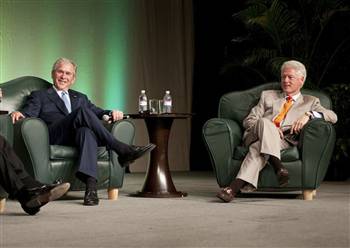
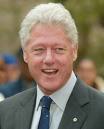



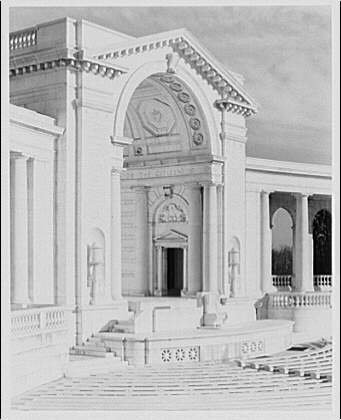


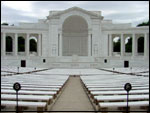 The Memorial Amphitheater at Arlington National Cemetery in Arlington, Va., was dedicated on May 15, 1920. While many ceremonies are conducted throughout the country, many consider the services at Arlington’s Memorial Amphitheater to be the nation’s official ceremonies to honor all American service members who serve to keep the United States free.
The Memorial Amphitheater at Arlington National Cemetery in Arlington, Va., was dedicated on May 15, 1920. While many ceremonies are conducted throughout the country, many consider the services at Arlington’s Memorial Amphitheater to be the nation’s official ceremonies to honor all American service members who serve to keep the United States free. 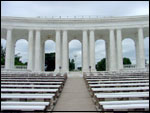 One copy of the following items is sealed inside the box placed in the cornerstone that day:
One copy of the following items is sealed inside the box placed in the cornerstone that day: The Amphitheater is constructed mainly of Vermont-quarried Danby marble. The marble in the Memorial Display Room is imported Botticino, a stone mined in Italy. The Memorial Display Room, between the amphitheater and the Tomb of the Unknowns, houses plaques and other tributes presented in honor of the four service members interred at the Tomb of the Unknowns (first known as the Tomb of the Unknown Soldier). A small chapel is beneath the Amphitheater stage.
The Amphitheater is constructed mainly of Vermont-quarried Danby marble. The marble in the Memorial Display Room is imported Botticino, a stone mined in Italy. The Memorial Display Room, between the amphitheater and the Tomb of the Unknowns, houses plaques and other tributes presented in honor of the four service members interred at the Tomb of the Unknowns (first known as the Tomb of the Unknown Soldier). A small chapel is beneath the Amphitheater stage.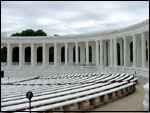 “When we assumed the soldier we did not lay aside the citizen,” from then-Gen. George Washington’s June 26, 1775, letter to the Provincial Congress is inscribed inside the apse. “We here highly resolve that these dead shall not have died in vain,” from President Abraham Lincoln’s Gettysburg Address is inscribed above the stage.
“When we assumed the soldier we did not lay aside the citizen,” from then-Gen. George Washington’s June 26, 1775, letter to the Provincial Congress is inscribed inside the apse. “We here highly resolve that these dead shall not have died in vain,” from President Abraham Lincoln’s Gettysburg Address is inscribed above the stage.




